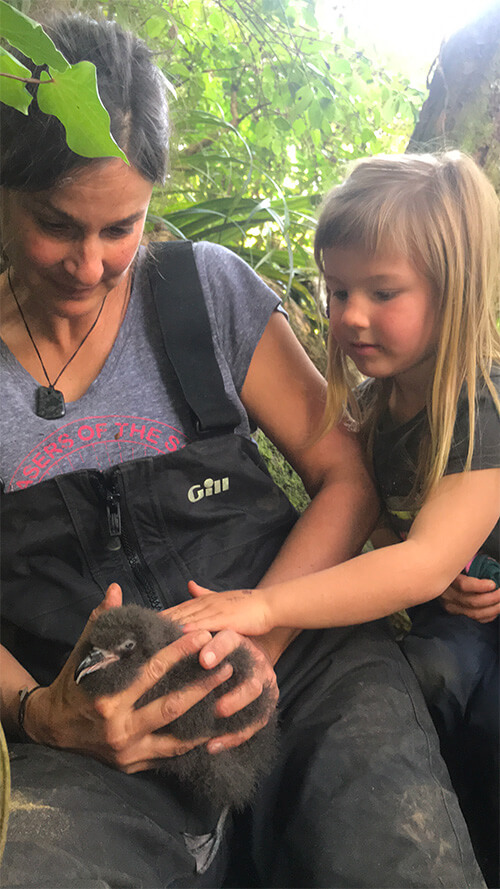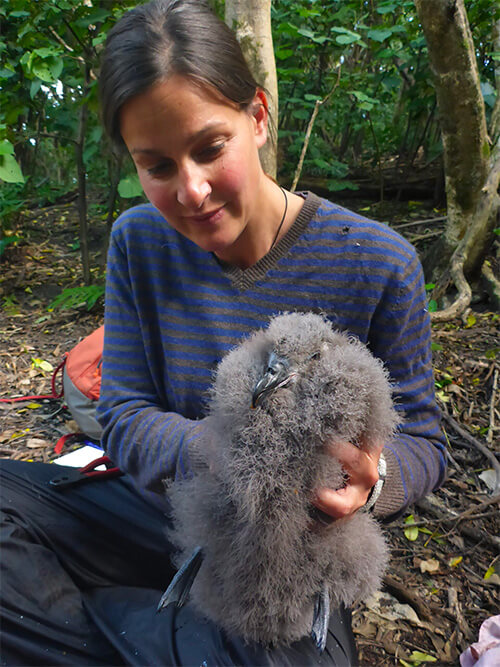
Living in harmony with nature
It has now been 20 years since the World Wide Fund for Nature (WWF) became The Tindall Foundation’s sole environmental Local Donation Manager. The relationship has grown considerably and, like all great partnerships, has stood the test of time.
What is the aim?
Over that period the partners have worked together to help build a stronger Aotearoa/New Zealand through strategic projects that can deliver a significant, ongoing benefit to our environment. A key focus has been educating New Zealanders about environmental protection and preservation. As well as national-scale projects, WWF’s work supports local conservation efforts.
TTF’s Environment Focus Area has two funding streams: the Community Conservation Fund (CCF) and the Environmental Education Action Fund (EEAF). Since 2000, the CCF has distributed approximately $3.7 million to over two hundred community groups to help protect and restore native habitats and protect threatened species of wildlife across Aotearoa/New Zealand. Alongside that, since 2004 the EEAF has distributed $975,000 to 218 schools, community groups and environmental education providers.
How does it work?
WWF’s partnership with TTF enables small, community-level conservation projects up and down the country. The goal is to encourage participation by communities in projects that improve the wellbeing of the local environment, as well as the quality of life for everyone who lives there. This vision encourages the concept of kaitiakitanga/custodianship, impacts youth and future generations through education, and makes a real difference to the land, flora and fauna.
Community organisations apply directly to WWF for funding; WWF then assesses each project to make sure it meets the relevant criteria. If needed, WWF can provide specialist expertise so that each project is well designed and follows a coherent strategic plan.
A Rocha Aotearoa New Zealand is just one of hundreds of examples.
What has been achieved?
A Rocha began its mission twelve years ago as a programme co-funded by the CCF and EEAF. Residents of Whāingaroa/Raglan believed that breeding seabirds, particularly the ōi (grey-faced petrel), had vanished from around Karioi Maunga/Mount Karioi. That was until some locals reported hearing strange calls at night. A Karioi Maunga project manager went to investigate and was delighted to discover a small colony of adult ōi. There were no chicks that first year, however, and subsequent nesting seasons also failed to produce offspring.
In 2013 WWF began funding A Rocha’s vision to restore biodiversity to the area, with a special focus on ōi. Fast-forward to 2017 and, for the first time in living memory, seven ōi chicks fledged on Karioi. That was due in good part to a three-year WWF donation, which empowered large-scale predator control over 2000 hectares of Mount Karioi, as well as project co-ordination, seabird monitoring, and volunteer training. Today, the ōi population is estimated to be over fifty breeding pairs.
A Rocha and projects like it play a pivotal role in inspiring and training the next generation of kaitiaki. It has combined with environmental education agency Papa Taiao Earthcare to create a Manaaki Ao (Earthcare) Programme for Year 11 to 13 students at Raglan Area School. The three-year programme offers a pathway to employment in conservation, ecosystem restoration, environmental management and sustainable technologies. Students gain an authentic, place-based connection and experience in their local environment that can lead them to become future kaitiaki. With the help of funding from the EEAF, in the last eight years WWF has been able to educate over 11,300 people/students in this type of programme across Aotearoa.
Over that same time, some 49 CCF grants have supported the restoration of freshwater and wetland habitats. One that formed in 2018/19 is Colville Harbour Care (CHC), a community-led project that aims to ensure a healthy and thriving Hauraki Gulf by enhancing coastal and freshwater management practices and the biodiversity of catchments. In its first three years the group created a native plant nursery (run as a social enterprise to secure the project’s financial sustainability), ran 16 community events and 23 working bees, and fenced 4.48 km to protect rivers and wetlands. CHC planted out 20,000 native plants, and ahead of the 2020 season had 18,000 more plants in their nursery ready to go.
CCF funding has also been crucial in protecting the hoiho/yellow-eyed penguin. Since 2012, the fund has contributed $33,500 to the Yellow-eyed Penguin Trust (YEPT) to protect penguins through habitat enhancement and pest control, helping to save 66 chicks and adult penguins in 2018/19 that may otherwise have died from malnutrition or disease. In a national context, between 2012 and 2017 WWF contributed more than $560,000 towards efforts to reach the goal of a Predator Free NZ by 2050, protecting many populations of native plants and animals in the process.
As illustrated by some of the examples above, these projects are helping to grow native species populations in targeted areas, with a profound impact on New Zealand.
What has been learnt?
There is a direct link between the health and wellbeing of nature and people. Research increasingly shows the positive impact a connection to the environment has on humans and society, and that spending time in nature is beneficial for physical, psychological and spiritual health over the long term. None of this could be achieved without dedicated and knowledgeable people in communities across Aotearoa, working daily to preserve and protect their local environments. Many of those are unpaid volunteers. The Tindall Foundation is humbled to be associated with those individuals and organisations — and with the great work WWF does in helping them to succeed, whether through its own expertise or applying TTF funds.
• We have learnt that in order to have maximum impact, community-volunteer programmes need effective management and technical expertise for strategic and operational planning and field delivery. WWF/TTF is one of the few funders supporting salaries for project co-ordination. This is crucial for groups to govern and manage their programmes effectively and thereby maximise the impact of community conservation.
• We’ve also learnt that educating future generations is essential to sustainability. Schools typically treat environmental education as an extra activity rather than a core curriculum component, and often rely on passionate teachers to keep programmes running. By developing holistic school and community buy-in, and upskilling and building knowledge and confidence among teachers, we can help increase the commitment to environmental education. TTF shares WWF’s ambition that students be given authentic, place-based connections and experiences in their local environment, so they can become future kaitiaki.
• Lastly, we’ve learnt that persistence is key. Successful local environmental projects must be undertaken with a long-term strategy in mind. Providing ongoing support and guidance to local leadership is key. While a project’s results won’t necessarily be immediate, being able to maintain a long-term vision and effort leads to the end results being extremely rewarding.
Hopes and dreams
WWF CEO Livia Esterhazy sums up the organisation’s work as follows: “WWF’s overarching vision and mission is a future where people live in harmony with nature. As in most of the planet, the relationship between people and nature in Aotearoa is out of balance. WWF aspires to return New Zealand to a place where people live, work and make money within the planetary boundaries so nature and people are both thriving.”
“New Zealanders are innovative and can adapt quickly — just look at what we’ve achieved so far through COVID-19! I believe we can lead the world in regenerative agriculture and through innovation that can positively impact the environment here and around the world. Communities across Aotearoa restoring nature are creating a collective impact that will be felt for generations to come.” — Livia Esterhazy

